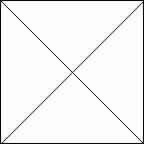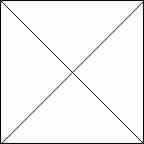Scientific name
Common name
Place of origin
Size (max)
Notes
Rhacodactylus
Knob-Headed Giant Gecko
New Caledonia
TL 20.5 cm: SVL 12.5 cm
Arboreal, with slightly prehensile tail. Overall colour is pale green-brown, with longitudinal stripes of pale brown or yellow running along its flanks. The head is large and angular. Description: head subpyramidal ; snout longer than the distance between the orbit and the ear-opening, once and two thirds the diameter of the orbit, slightly swollen at the end; interorbital space and forehead deeply concave; hinder part of head with knob-like prominences, viz. one above the ear-opening, formed by the free end of the quadrate, and five others formed by the extremities of the parietal bones; the borders and sutures of the latter form prominent ridges; the ends of the postfrontal bones and mandible also prominent; ear-opening large, oval, oblique. Body and limbs moderately elongate, rather depressed ; digits not very broadly dilated, not very unequal, with a very slight rudiment of web, which is altogether absent between the two outer toes. Throat and sides of neck with a few irregular folds; a slight fold bordering the hind limb posteriorly. Scalation details: head and body covered with subequal small granular scales, flattened on the belly, smallest on the throat. Rostral quadrangular, not quite twice as broad as high, with a small notch in the middle of its upper border; nostril pierced between the rostral, the first upper labial, and seven small nasals, the anterior being much the largest; sixteen to eighteen upper and fourteen or fifteen lower labials; mental small, subtriangular, separating the inner labials; no regular chin-shields, but larger scales passing gradually into the granules of the throat. Tail cylindrical, covered with uniform small flat scales arranged in verticils. Male with an irregular patch of very numerous praeanal pores, and a sort of pouch in the integument of the thigh posteriorly, near the tibia. Coloration: yellowish grey, with darker and lighter longitudinal bands on the back ; flanks and limbs marbled, with darker; lower surfaces dirty white, with scattered blackish dots. [SOURCE: Boulenger]
R. leachianus
Leach's Giant Gecko
New Caledonia
12-14"
Probably the largest living gecko species in the world. Description: head large, oviform, elongate ; forehead concave; snout longer than the distance between the orbit and the ear-opening, a little more than twice the diameter of the orbit; ear-opening narrow, horizontal. Body and limbs moderately elongate, rather depressed; digits moderately elongate, broad, not very unequal, half-webbed; limbs bordered on each side by cutaneous folds, most developed on the anterior side of the fore limbs and on the posterior side of the hind limbs; other cutaneous folds below the rami mandibulas, on the sides of the neck, and from axilla to groin; throat with a few cross folds. Scalation details: upper surface of head covered with small irregular polygonal convex scales, larger than the granules of the back, elongated and more or less distinctly keeled on the forehead and snout; rostral twice as broad as high, with more or less distinct median cleft above; nostril pierced between seven or eight small nasals and the first upper labial; upper labials seventeen or eighteen; lower labials fourteen to seventeen, anterior very high; mental narrow, elongate, wedge-shaped, about the size of the proximal labials; no regular chin-shields, but a few larger scales, passing gradually into the minute granules of the throat. Scales small, granular, smallest on the lower surfaces. Tail: cylindrical, tapering, covered with uniform small flat juxtaposed scales arranged in verticils. Coloration: grey or pinkish grey above, dotted and indistinctly marbled with brown, sometimes with large whitish spots; lower surfaces white, uniform. [SOURCE: Boulenger]
R. trachycephalus
?
New Caledonia
?
Large and stocky species with an effective camouflage of green, brown and pink mottling over the back and tail that conceal it when resting on a lichen-covered trunk.
R. trachyrhynchus
Rough-Snouted Giant Gecko
New Caledonia
TL approx 30.5 cm: SVL approx 15 cm
Strictly arboreal but found in a wide range of habitat, including sclerophyll forest. Description: head oviform ; snout longer than the distance between the orbit and the ear-opening, once and two thirds the diameter of the orbit; ear-opening narrow, horizontal. Body and limbs moderately elongate, rather depressed; digits broadly dilated, not very unequal, with a distinct rudiment of web, absent between the two outer toes. Sides of neck with irregular folds. Scalation details: snout and interorbital space with very large, unequal, rough tubercles confluent with the cranial ossification; hinder part of head, body and limbs with very small, equal granular scales; granules smallest on the throat. Rostral broad, quadrangular, with distinct median cleft above; nostril pierced between the first labial and five or six small nasals, the anterior being much the largest; nine to eleven upper labials; mental small, triangular; nine to eleven infralabials, gradually decreasing in size, inner pair nearly three times as high as broad, in contact behind the mental; a row of large scales behind the labials. Body covered with uniform small granular scales. Tail: strongly prehensile: cylindrical, with uniform small flat scales arranged in verticils. Male with an irregular patch of very numerous preanal pores. Coloration: head brown; the rest of the upper surfaces grey, dotted with darker; lower surfaces dirty white, with scattered grey dots. Reproduction: the only live-bearing member of the genus, or in New Caledonia. [SOURCE: Bauer & Sadlier, Boulenger]

